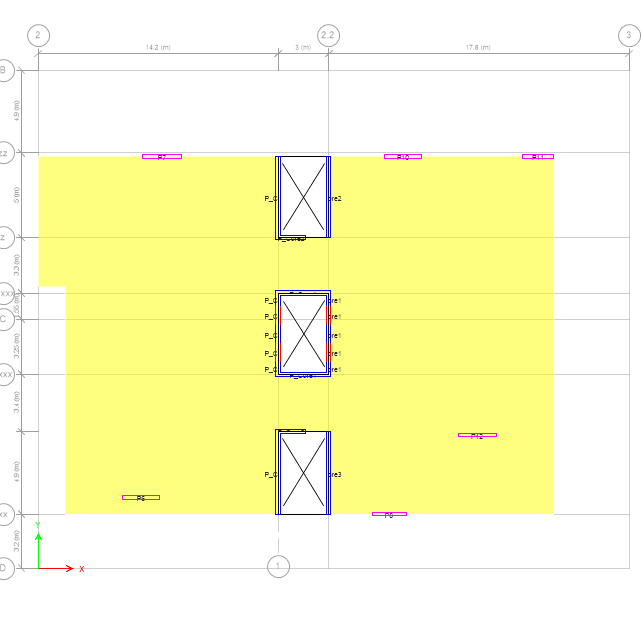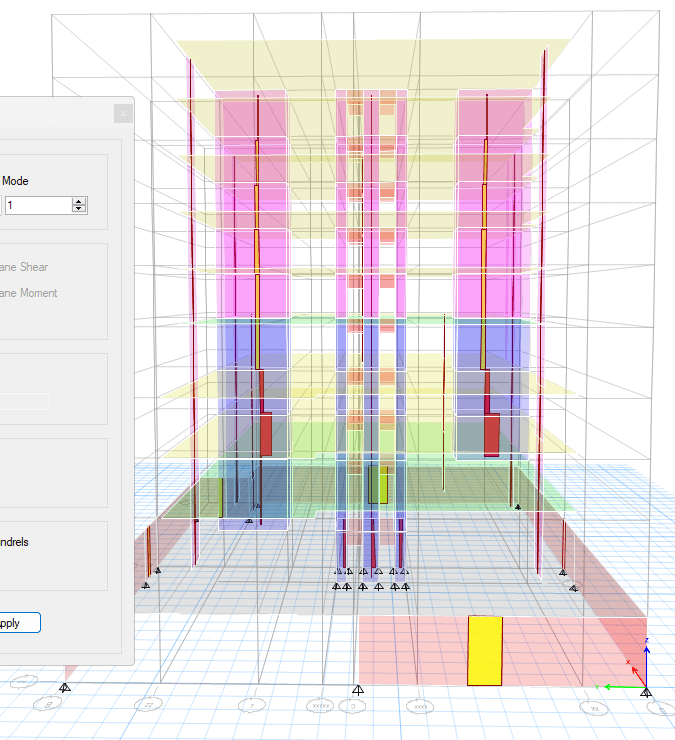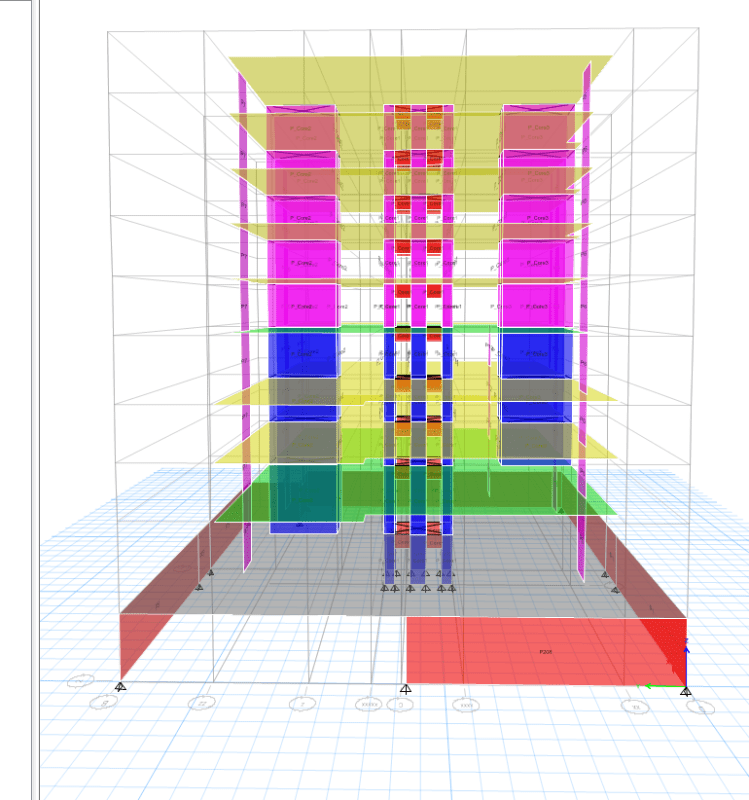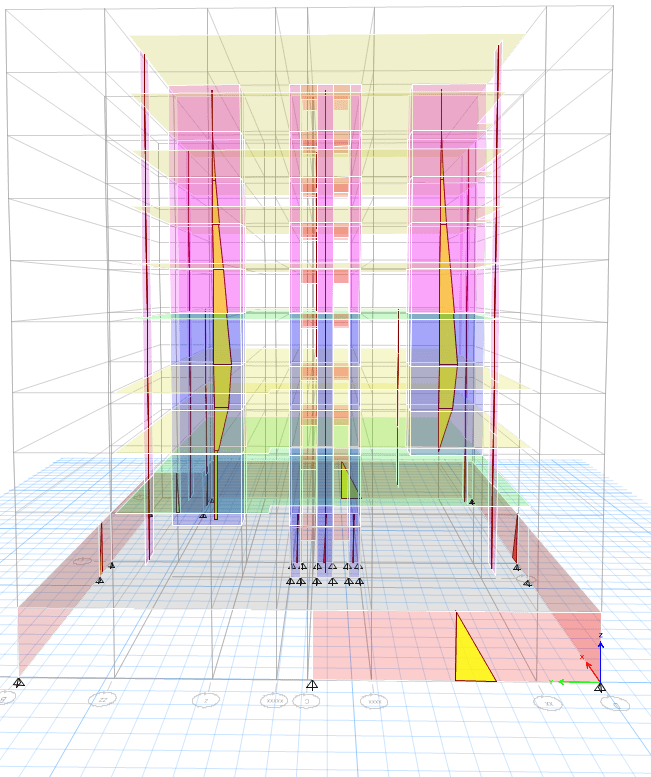Hi there,
I have a simple multistory building with a basement. There are a few transfer floors that need to transfer out columns and shear walls. The system is a two way slab supporting core walls and various other shear walls. I've taken my gravity loading from another program and then applied it in ETABS as a mass source. This allows me to use auto lateral feature in ETABs.
My approach from a vertical loading perspective is to design the slab for vertical loads using RAM concept. This is not an issue.
When using ETABS to conduct lateral analysis of the building, it produces very weird shear and moment distributions in pier elements under pure EQ cases. After playing around, adding rollers under the core walls, adding thick slab under the walls to simulate some rotational and vertical stiffness it still gives me results that I would not expect. I'm getting shear reversal up at floors where there should not be any shear reversal.
I don't want the slab to couple hence why i've modelled shell elements with low out of plane stiffness to simulate a membrane. I've tried adding some out of plane stiffness but its still not producing shears from what I expect.
Has anyone encountered this before? I noticed weird shears even under dead load from what I believe is the building tipping towards each other.
Any help would be appreciated as I've spent alot of time testing different things but no luck
Attached is my etabs model if you would like to have a look. I'm very interested in seeing how we can tweak a Etabs lateral only model to capture the forces on lateral load resisting elements.
Thanks so much!
I have a simple multistory building with a basement. There are a few transfer floors that need to transfer out columns and shear walls. The system is a two way slab supporting core walls and various other shear walls. I've taken my gravity loading from another program and then applied it in ETABS as a mass source. This allows me to use auto lateral feature in ETABs.
My approach from a vertical loading perspective is to design the slab for vertical loads using RAM concept. This is not an issue.
When using ETABS to conduct lateral analysis of the building, it produces very weird shear and moment distributions in pier elements under pure EQ cases. After playing around, adding rollers under the core walls, adding thick slab under the walls to simulate some rotational and vertical stiffness it still gives me results that I would not expect. I'm getting shear reversal up at floors where there should not be any shear reversal.
I don't want the slab to couple hence why i've modelled shell elements with low out of plane stiffness to simulate a membrane. I've tried adding some out of plane stiffness but its still not producing shears from what I expect.
Has anyone encountered this before? I noticed weird shears even under dead load from what I believe is the building tipping towards each other.
Any help would be appreciated as I've spent alot of time testing different things but no luck
Attached is my etabs model if you would like to have a look. I'm very interested in seeing how we can tweak a Etabs lateral only model to capture the forces on lateral load resisting elements.
Thanks so much!





![[sad] [sad] [sad]](/data/assets/smilies/sad.gif)